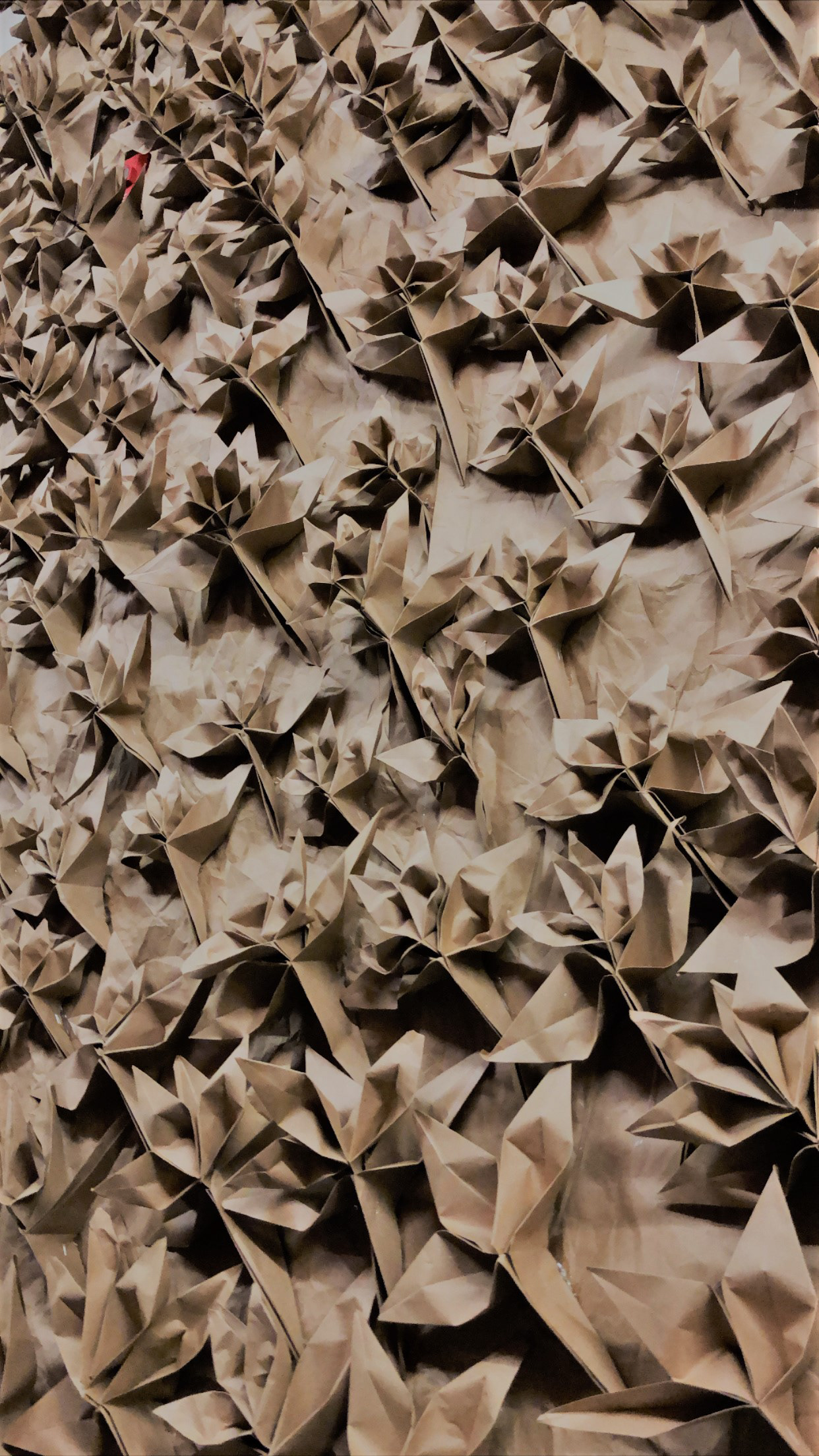An introduction to exploring surface patterning techniques and modification methods. In this project, I created several iterations of patterns to help inform the design of my final pattern titled “Mutually”. Having been inspired by Marimekko’s devotion towards creating clothing and designs that are gender-inclusive, I created my own pattern that best represents my own interpretation of being neutral at heart and equals in society.
The image to the right is my final iteration of “Mutually” which is constructed out of cardboard and is 12”x12” with a depth of 1.75”.
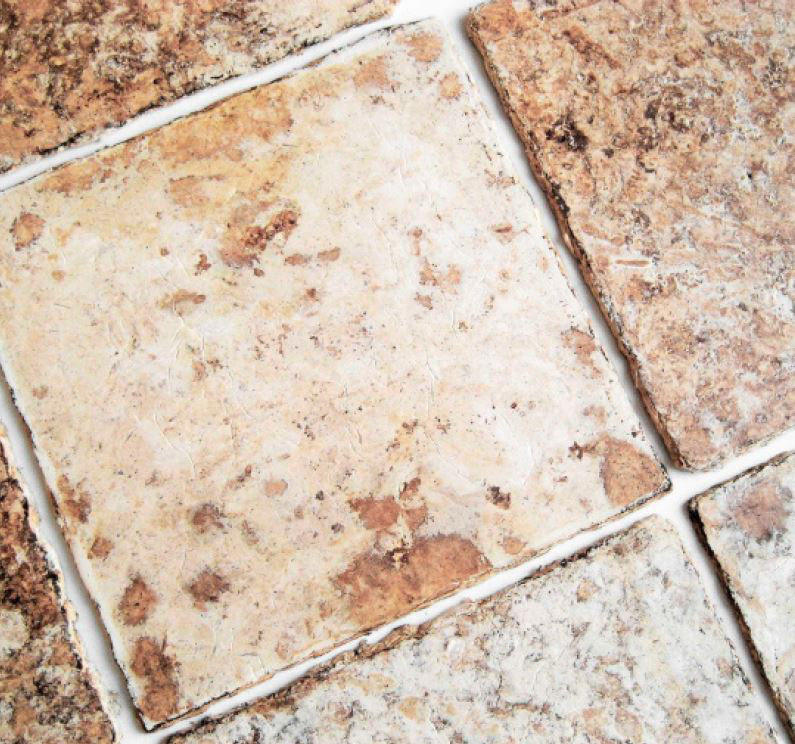
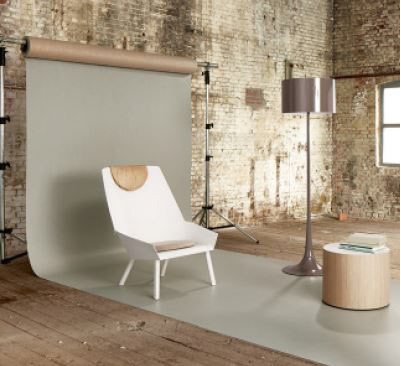
In this portion of the project, I researched two materials of interest to apply to my finished pattern. The materials I chose to integrate into my design are linoleum and mycelium. With the growing demand for more sustainable design, I chose to use these materials because they are both biodegradable and have properties that are both friendly to the health of humans and to the environment. Using my two chosen materials and my pattern I intermixed them to create an interior installation in a series of photoshopPed spaces.
Mycelium
Mycelium is the vegetative tissue, or roots, of mushrooms, that when networked together binds together like glue. This bond makes the material extremely strong, and since it is made entirely of mushrooms, it is biodegradable, nontoxic, and fire- and water-resistant. The image to the right and below are of The Growing Pavilion that was created by Pascal Leboucq and Erik Klarenbeek for Dutch Design Week. This pavilion is made entirely out of mycelium and agricultural waste, making it a fully eco-friendly structure. In these images, I have applied my own pattern with the mycelium material to the entrance doors of the pavilion. It symbolizes mankind’s mark on opening new doors for sustainable design.


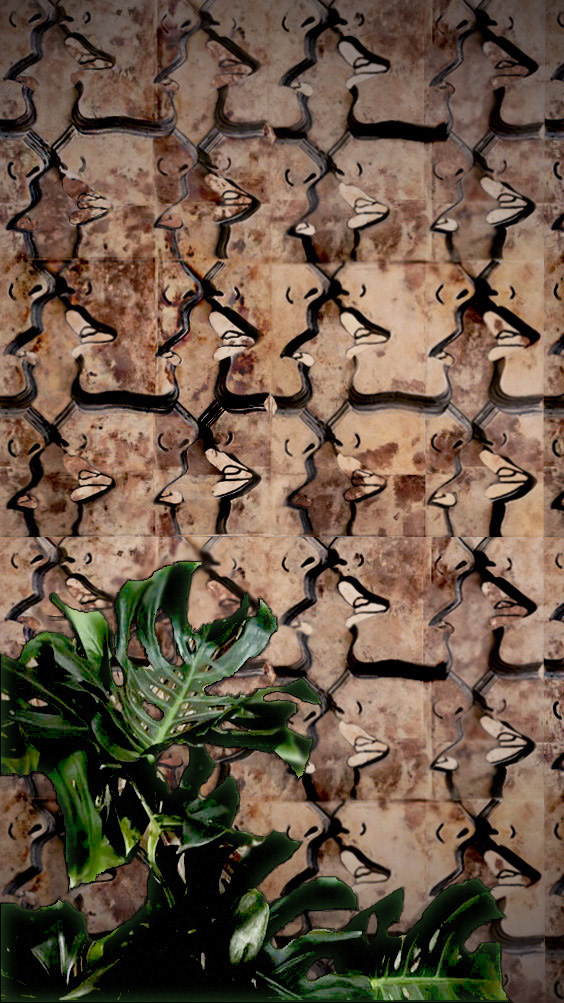
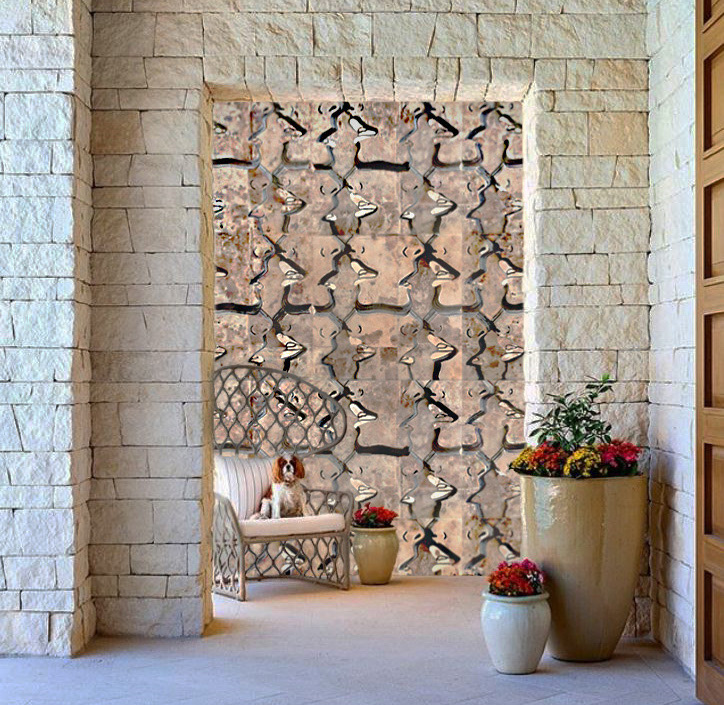
Mycelium
These two images to the left are both of interiors that use my pattern as an art wall installation. Mycelium has strong acoustic properties, which makes it a great material to use in places with hard surfaces where sound echoes. The image on the right is a great example of a place where mycelium would be a good fit to absorb sound.
Linoleum
Since linoleum flooring has been around for over 150 years, it’s interesting to think about the fact that this was a very environmentally friendly flooring choice before people were so environmentally conscious. Linoleum is made from linseed oil, cork dust, wood flour, pine resin, ground limestone, and pigment all pressed onto a backing of jute. Because it is made of these natural components, it is biodegradable.
The images below are from a rustic-themed boutique hotel in Tulum, Mexico. Since linoleum comes in a variety of patterns, textures, and colors, there are options available to fit any style of interior. In the top image, I did a concrete patterned linoleum for the floor of a spa because of its excellent water-resistant properties. As for the bottom image, I designed a plaster patterned linoleum that would be installed as a mural on a linoleum wallpaper.


Pattern Project Part II
The Installation
The Installation
After having completed the physical pattern models my class collectively chose four patterns to further develop into full-scale wall installations. The class was split up into 4 groups and I was paired with 8 of my fellow classmates to work alongside the pattern Designer Fah Chanakarn who originally created her 12"x12" pattern using origami flowers.
Fah Grew up making origami crafts with her siblings as a way to pass the time. For this project, she wanted to keep the project cost and materials to a minimum while also utilizing some of her Origami skills. By using 4 different sizes of brown construction paper cut into 12", 10", 8", and 6" squares, the group split up to each make 37 origami flowers to adhere to a cardboard backing.
This is what 300 ORIGAMI FLOWERS looks ON A 6' X 8' WALL INSTALL.



